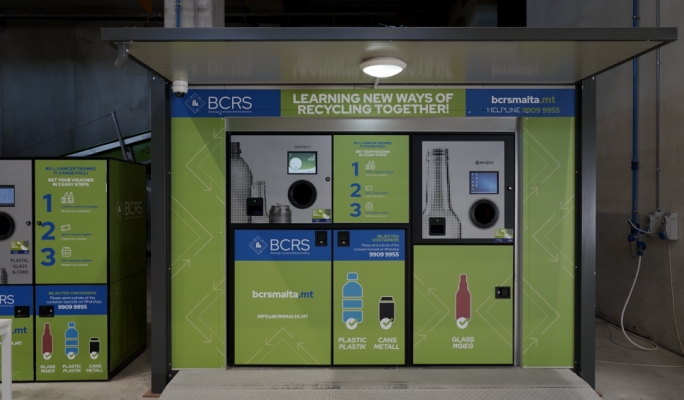Manufacturing businesses often burn through cash quickly. This can create financing needs that are difficult to meet without a business loan.
Business loans for manufacturers are flexible lending solutions. Instead of a one-time infusion of funds, lenders may approve a line of credit that you can access as needed. Similar to a credit card, you only pay interest on the funds you use.
Line of Credit
A business line of credit is an excellent tool to manage cash flow. It provides a source of working capital, allowing manufacturers to react quickly to the ebbs and flows of operational expenses.
The application process for a line of credit is often more streamlined than traditional loans, with many lenders offering a fast pre-approval. This allows businesses to gauge their eligibility with little effort. Lenders typically use a mix of current assets (such as receivables, inventory and equipment) as collateral for a line of credit.
However, lines of credit differ from traditional term loans in that you only pay interest on the amount used, whereas with a loan you have to pay interest on the entire sum borrowed. A line of credit also offers shorter draw periods and repayment terms.
Some manufacturers use a line of credit as a way to finance the cost of raw materials, labor and production costs associated with filling orders. This is called Work in Progress Financing, and it is an ideal solution for cyclical businesses.
Other manufacturers use lines of credit to finance growth initiatives that require upfront capital. The good news is that there are financing solutions+ for all types of manufacturing companies. For example, startup manufacturers with limited financial history can qualify for an unsecured business line of credit with Fundbox. This is possible because lenders consider a variety of factors when assessing a company’s creditworthiness, including the business’s revenue, industry and cash flow.
Working Capital
A manufacturing business needs to have enough working capital on hand to pay for daily operations, including production expenses. Also known as net working capital, this figure is calculated by subtracting a company’s current liabilities from its current assets. It’s important for businesses to maintain this amount to cover debts and avoid potential financial issues. In addition, maintaining working capital allows a business to invest back into its operations in order to potentially grow profit.
Many factors can affect a manufacturing’s working capital, including its policies related to revenue collection, cash flow management and inventory control. For example, extended payment terms with customers can create a delay in receiving customer payments, which can reduce the company’s available working capital. This may lead to overstocking and tying up funds that could be used for other purposes, such as hiring new employees or investing in production equipment.
Fortunately, there are multiple financing options for manufacturers that can help boost their working capital. These include lines of credit, invoice financing, unsecured loans and short-term financing. It’s important for companies to research the rates, terms and availability of each option to ensure they choose the right solution. Using an online working capital calculator can be helpful for calculating the amount of funding required to cover a manufacturer’s day-to-day operating costs. For instance, Pursuit provides an unsecured line of credit for small business owners that uses their accounts receivable as collateral and can be transferred directly into the company’s main operating bank account.
Large Purchase Orders
Purchase order financing companies work with small businesses that are unable to access their own business loans due to liquidity and cash flow constraints. This type of financing provides funds to cover supplier costs so that a company can complete customer orders. This allows companies to expand their customer base without the risk of taking on too many new customers at once.
Let’s say a company receives a large order for high-end cat outfits in the summer from a customer who will pay them in November. The company has the labor and specialty tailors to make the outfits, but does not have enough cash on hand to pay all of the supplier invoices for the materials needed. Rather than turning away the big order, they can use a purchase order financing solution like King Trade Capital to get the funding to meet their supply needs and deliver the product to their customer.
The purchase order financing company will pay the suppliers directly and then collect payment from the customer once the product is delivered. After the financing company collects payment, they will deduct their fees and principle from the total and pay the remaining balance back to the borrowing business. This provides the company with the cash it needs to pay its suppliers, and also lets it expand its revenue generating opportunities by accepting larger customer orders.
Inventory
Inventory financing is a type of short-term loan or line of credit that allows businesses to purchase products with the intention of selling them later. The company then warehouses the inventory until it is ready to be sold, which makes this financing option particularly useful for seasonal companies that experience fluctuations in sales.
Lenders who offer this form of funding usually require a thorough evaluation of the company’s products and an estimate of their worth, along with a business plan that shows how the company will use the proceeds of the loan to meet its financial obligations. Additionally, they may have strict rules about how the company must manage its inventory.
This form of financing is commonly used by retail, wholesale and manufacturing businesses that want to ensure they have sufficient stock on hand to meet customer demand. It can also help them reduce the amount of cash they need to pay vendors and suppliers, which could free up funds for other important payments such as payroll, rent and other operating expenses. This type of funding is available as either a term loan or revolving line of credit, and it can be an excellent option for small businesses that don’t have the established business history or assets needed to secure larger lending options. You can learn more about this type of financing from Nav’s Inventory Loans Guide.manufacturing loans



